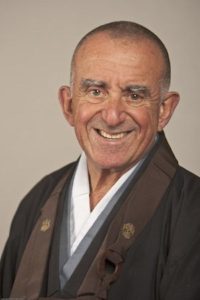Mulling It Over - Or Not

The Abbot’s Letter
February 2021
“Mulling It Over – Or Not”
In the mid 1950s and ‘60s, Zen practice migrated from Asia to the West, to North America, Central America, South America, Europe, and Australia. Made possible by the arrival of Zen teachers from Japan, China, Vietnam, and Korea, Zen centers emerged in the U.S., energized by enthusiastic spiritual seekers. We willingly disrupted our lives to embrace a teaching, practice, and a world view from traditions and cultures very different from our own. We turned our attention to those pioneering priests, imploring them to “Teach us,” “Tell us what to do.”
Fifty years ago, those early Zen teachers from the East provided the necessary start. Today we can no longer turn to their experience, wisdom, charisma, and sense of authenticity that gradually evolved on the other side of the Pacific more than two thousand years ago. The ground for that evolution was made fertile by young men and women dedicating their lives to single-minded selfless practice, either as hermits or in monastic communities, away from distractions and attractions of worldly life.
Now we face the challenge of creating Zen practice in an increasingly complex modern world. We now know what to read, we know the forms, we know the ceremonies, we know the chants. But today’s Zen students need to gain understanding and discover “what to do” through their own efforts that cannot avoid being conditioned by a material-oriented world view, rather than by relationships expressed in nature. And we need to be fully engaged in society, not separate from it.
The differences in western and eastern cultures begs the question: Will the lens of modernity prevent us from seeing Reality as our Zen ancestors did?
In his book “A Grief Observed,” the celebrated mid-twentieth century English writer and Oxford professor C. S. Lewis writes:
Five senses; an incurably abstract intellect;
a haphazardly selective memory; a set of
preconceptions and assumptions so numerous
that I can never examine more than a minority
of them – never become conscious of them all.
How much of total Reality can such an apparatus
let through?
Lewis became a devout Christian in mid life. Nothing indicates that he knew anything of Buddhist teaching. Yet this passage coincides with the Buddhist understanding of how the activity and complexity of the human mind present a deterrent to understanding the Truth. His observations are the result of a lifetime of deep reflection on universal questions: the meaning of life, free will, the existence of God, suffering, happiness, and grief.
Such questions are not unique to the brilliant intellect of C. S. Lewis. Ever since we could think, human beings have instinctively pondered the same enigmas. Lewis’ discernment is similar to what ancient sutras and writings tell us about the mind, suggesting that all humans share the same wisdom at their core, independent of conditioning and culture.
In the West, we present our understanding through descriptions of experiences as well as explanation of observed facts – as in the paragraph above – encouraging us to analyze ideas and feelings in depth, to expand on what we discover, to modify our opinions, and to share ideas with others. We call it “mulling it over,” a significant process, a vital quality of humanity.
Our Zen ancestors, rather than relying on wordy explanations, expressed their perceptiveness with immediacy, with a sense of nothing more to say:
Under cherry trees
there are
no strangers
– Issa
The thief left it behind:
the moon
at my window
– Ryokan
Come out to view
the truth of flowers blooming
in poverty
– Basho
No limit
to kindness –
winter violets
– Mitsu Suzuki
These vivid pictures of a world shared intimately by humanity and nature do not lend themselves to “mulling it over.” They come from an awareness that has taken a break from rational thinking – Lewis’s “apparatus” – and returned to the quiet center of undifferentiated Reality.
In the modern world, we need both the logical, literal thought process that thinks things through, solves personal and global problems, and creates better lives for ourselves and the world we share. And we need to continue our practice of returning to stillness, in order to see the interrelationship of all things with uncluttered awareness.
We are in the process of creating a Zen practice that includes caring and compassion in our rational decision-making in this complicated, technical world. Let’s continue practice wherever we go and express it in whatever we do.
Les Kaye
Abbot of Kannon Do


